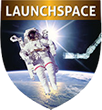Course Details
Course Summary
This professional course covers the lift-off and launch trajectory environments and their impact on the design and testing of launch vehicles and payloads. This course will include a detailed system overview of: Launch and pre-launch sequence of events - what occurs, when it occurs, and for how long; the loads associated with each event; how these loads are defined (4 basic load types); how to design the payload to withstand these environments (defining requirements, design load factors, loads terminology, coupled loads analyses); how to test the payload (component through system level) to survive these environments (test requirements, margins, test descriptions, launch vehicle involvement, test plans and reports); and how to effectively integrate the payload with the launch vehicle during the payload program (schedule, meetings and reviews, issues, documentation). Other items to be covered include: flight instrumentation; launch vehicle knowledge (data reliability); and fundamentals of loads (terminology, margins, categorization, dynamics fundamentals, etc.). Finally various case studies will be discussed, covering both launch vehicle and spacecraft failures or anomalies and the lessons learned from them.
Course Materials
Include extensive notes and reference materials.
Who Should Attend
Spacecraft and launch vehicle engineers, system engineers, program managers and all professionals interested in obtaining a working knowledge of the implications of lift-off and launch environments and designing and testing of spacecraft structures to withstand these environments.
What You Will Learn
To recognize the environments that control the structural design and testing of all launch vehicles and Spacecraft. To interpret these environments and apply the results to the design and testing of all launch vehicles, spacecraft, and electrical components mounted on all launch vehicles and spacecraft. To investigate, monitor and evaluate test results of the environmental testing of all launch vehicles, spacecraft, and electrical components including static, modal, shock, vibration and acoustic testing.
Course Outline
- General Sequence of Events During Launch and Ascent .
- Specific Sequence of Events for Various Launch Vehicles (Atlas, Ariane, Proton).
- Flight Loads for All Launch and Ascent Events.
- The Static/Quasi-Static Environment.
- The Acoustic Environment.
- The Vibration Environment.
- The Pyrotechnic Shock Environment.
- Ensuring Spacecraft/Payload Compatibility—Design Phase of the Program.
- Test Phase of the Program--Why, How and Where.
- Launch Vehicle Integration—Events, Issues, Documentation, and Schedule.
- Flight Instrumentation Requirements and Launch Vehicle Data Reliability.
- Case Histories.
Instructor

Jim Haughton is a structural test engineer with over 30 years of experience in structural testing of aerospace hardware. He specializes in mechanical launch environment analysis, acoustic, vibration and modal survey testing on spacecraft. His aerospace work has been primarily through the Naval Research Laboratory’s Naval Center for Space Technology and NASA Goddard Space Flight Center. He has a BSME degree from Manhattan College, Bronx, N.Y. and he has been the President of, and Structural Test Engineer for, Kinetic Research Corp since 1985.
